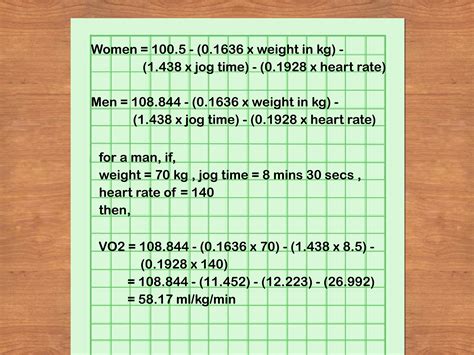How to Measure VO2 Max: A Comprehensive Guide
Measuring your VO2 max can be a powerful tool for understanding your cardiovascular fitness and tracking your progress. VO2 max, or maximal oxygen consumption, represents the maximum rate at which your body can utilize oxygen during intense exercise. A higher VO2 max generally indicates better cardiorespiratory fitness. But how do you actually measure it? Let's explore the different methods available.
Methods for Measuring VO2 Max
There are several ways to measure or estimate your VO2 max, ranging from sophisticated laboratory tests to convenient online calculators. The accuracy varies significantly between methods.
1. Graded Exercise Test (GXT) in a Lab
This is the gold standard for measuring VO2 max. A GXT involves exercising on a treadmill or stationary bike while connected to equipment that measures your oxygen consumption and carbon dioxide production. The intensity gradually increases until you reach exhaustion. This method provides the most accurate measurement. However, it requires specialized equipment and trained professionals, making it less accessible.
2. Submaximal Exercise Tests
These tests don't require you to exercise to exhaustion. Instead, they measure your oxygen consumption and heart rate at submaximal levels of exertion and then extrapolate to estimate your VO2 max. These tests are less accurate than GXTs but are more convenient and accessible. Examples include:
- Bruce Protocol: A common treadmill test with progressively increasing speed and incline.
- Balke Protocol: Another treadmill test with increasing speed, but a constant incline.
- Bike Ergometer Tests: Similar in principle to treadmill tests, but using a stationary bike.
Important Note: The accuracy of submaximal tests depends heavily on the accuracy of the equations used for extrapolation and the individual's response to exercise.
3. Online Calculators and Prediction Equations
Numerous online calculators and prediction equations estimate VO2 max based on factors like age, gender, weight, running time, and heart rate. These methods are convenient and readily available, but they are generally less accurate than laboratory tests or submaximal tests. They offer a reasonable estimate, especially when combined with other fitness assessments. Consider these as a general guideline rather than a precise measurement.
4. Wearable Fitness Trackers
Many modern fitness trackers and smartwatches can estimate VO2 max based on your heart rate and activity data. While convenient, the accuracy of these estimations varies considerably depending on the device and individual factors. These trackers typically utilize algorithms that correlate your exercise data with population-based VO2 max values. They should be viewed as a trend indicator rather than a precise measure.
Factors Affecting VO2 Max
Your VO2 max is influenced by several factors, including:
- Genetics: Your genetic predisposition plays a significant role.
- Training: Consistent cardiovascular training significantly increases VO2 max.
- Age: VO2 max naturally declines with age.
- Gender: Men generally have a higher VO2 max than women.
- Altitude: Training and testing at high altitudes can affect results.
Interpreting Your VO2 Max
Once you have a VO2 max measurement (or estimate), you can compare it to normative data for your age and gender to understand your fitness level relative to others. Remember that the most important aspect is consistent improvement over time, rather than focusing solely on a single number.
Conclusion: Choosing the Right Method
The best method for measuring your VO2 max depends on your needs and resources. If accuracy is paramount, a GXT in a lab is the most reliable option. However, for a convenient and accessible estimate, submaximal tests or even online calculators can be useful tools for tracking progress and assessing your fitness journey. Regardless of the method chosen, remember that consistent effort and a focus on improving your overall health are key to achieving your fitness goals.
